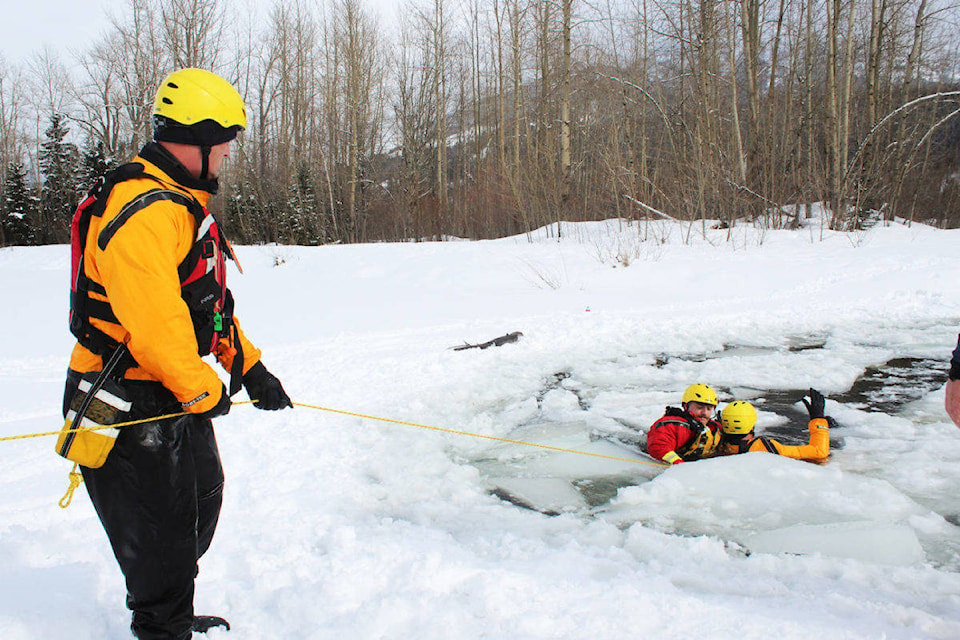In light of the dropping temperatures and freezing lakes, Fernie Search and Rescue (SAR) encourage residents to be cautious when skating on frozen ponds, and know what to do in the event of an emergency.
“When it’s minus 30 it makes sense, but when it’s minus 10 and it’s suddenly warmed up a bit and started raining, be very very careful, don’t go on your own, and have an idea of what you’re going to do if it goes wrong and (someone) goes through,” said Simon Piney, head of Fernie SAR.
“Before you go onto the ice, check the thickness and look at the quality of the ice – milky, cloudy ice with air bubbles is normally a lot less strong than the clear, perfect ice that you can see through,” said Piney.
Piney added that ice thickness often differs throughout a lake or pond, with certain local bodies of water having rivers that flow through them, compromising their integrity in specific areas.
Should someone fall through ice, after immediately calling for help, Piney recommends encouraging the individual to get out on their own, preventing more people from falling in.
If they are unable to get out, Piney suggests throwing a rope, or pushing out a hockey stick.
“If you’re going to go onto the ice yourself, lay flat, go on the ground, push a hockey stick out to them and see if they can grab it.”
Piney furthered that humans can survive in cold water for up to an hour, however the danger is that muscles begin to lose their ability to properly function after 10 minutes of constant exposure.
“For the first five, ten minutes, when you go in you’re going to have the cold water reflex so take a moment, try and get your breath back, then try and get out – paddle, kick, get your feet up, try and get up on the ice,” said Piney.
Those unable to get out of the ice are advised to lean on the ice as hard as possible, as clothed arms will eventually freeze to the ice.
“What that means is that after those ten minutes, when you’re unable to kick and swim anymore, you’ll be frozen in place with your head out of the water, and then you’ve got another 40 to 50 minutes for someone to get you out – and that’s plenty of time for Search and Rescue.”
Both Fernie SAR and the Fernie Fire Department have ice rescue capabilities.
To keep up to date with FAR rescues and resources, visit their Facebook page.
READ MORE: Fernie Firefighters brush up on ice rescue training
reporter@thefreepress.ca
Like us on Facebook and follow us on Twitter
